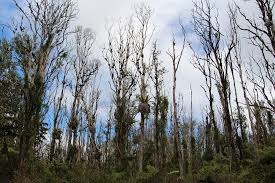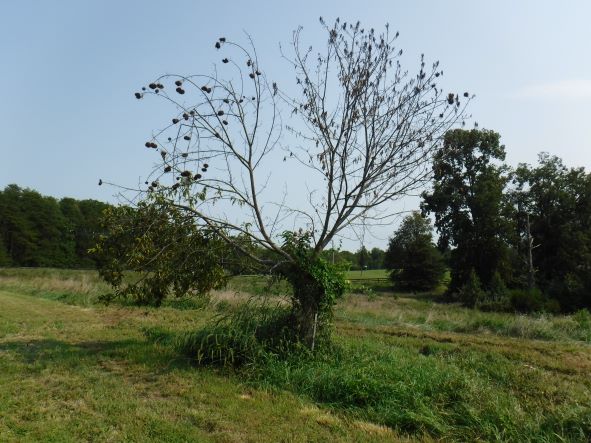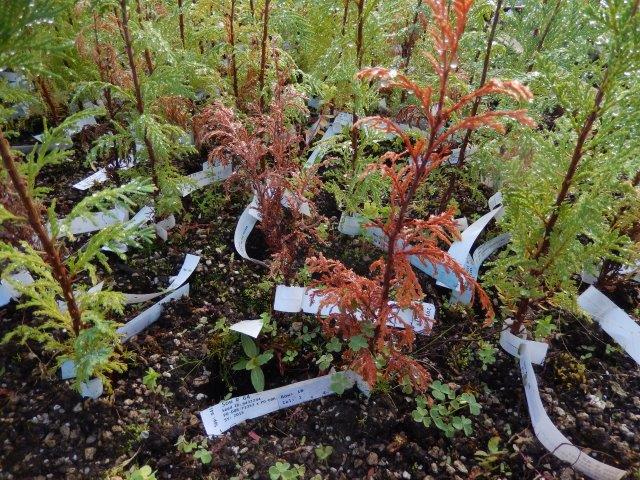
I have written several times about the importance of the United States adopting a comprehensive program to address all aspects of introduced forest pests including breeding of trees resistant to the introduced pests. See Fading Forests III from seven years ago; an earlier blog; and Bonello et al. 2020 (full citation at end of blog), in which we proposed the creation of a federal Center for Forest Pest Control and Prevention to implement end-to-end integrated responses to forest pest invasions. A similar view is being voiced internationally; see, e.g., Buggs et al. 2020.
I have seen efforts to restore pest-decimated tree species to the forest lagging. I complained in a recent blog link that the recent USDA Forest Service report on invasive species (Poland et al. 2021) gave a misleading impression that significant effort was being made on resistance breeding to address several pests.
The USFS does support breeding trees resistant to pests, but in my view this support has been inadequate – including in the USFS report. Others think so, too — see Sniezko and Koch 2017. This insufficiency only grows, despite USDA claims to recognize that promoting resistance to introduced forest pests is an essential component of achieving its strategic goals of maintaining or enhancing productivity while ensuring responsible stewardship of resilient natural resources (Federman and Zankowski 2019).
Work at the Dorena Genetic Research Center
The principal and most notable and successful resistance breeding effort has been the Dorena Genetic Resource Center. The Center was established by, and is funded through the USFS Region 6 Genetic Resource (part of the National Forest System) and Forest Health Management programs. The Center has a solid foundation in the expertise and facilities needed to carry out breeding efforts. Also, it has a 50-plus-year track record.
Dorena has supported breeding of white (five-needle) pines and Port-Orford cedar. Dorena also now provides expertise and some facilities to partners exploring a) breeding Oregon ash to resist the emerald ash borer and b) two Hawaiian trees (koa and ‘ōhi‘a) to resist introduced pathogens (see below). Dorena staff is assisting low-budget, shoe-leather efforts to explore breeding of other trees at risk to non-native pests. These programs are described briefly in Box 8 of Poland et al. 2021. Despite this valuable effort with proven success funding to continue Dorena’s work is tenuous.
White Pine Blister Rust — Efforts to develop resistance to white pine blister rust (WPBR) DMF in five-needle pine species (nine grow across the country) began more than 50 years ago. Currently Dorena focuses on whitebark pine (Pinus albicaulis), denizen of high elevations in the West, along with western white pine (P. monticola), sugar pine (P. lambertiana) , limber pine (P. flexilis), southwestern white pine (P. strobiformis), and foxtail pine (P. balfouriana). Testing whitebark for resistance to WPBR began in 2002. Seedling families from >1,300 parent trees are in various stages of testing. The discovery that some whitebark populations have much higher levels and frequency of partial resistance has allowed rapid distribution of seed. The first restoration plantings in the Pacific Northwest were in 2009.
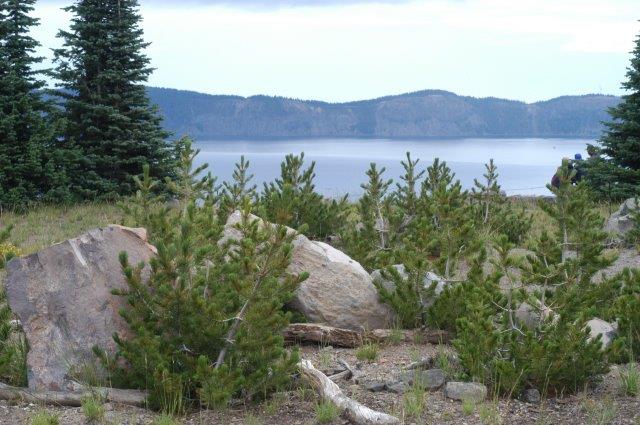
There are many collaborators – especially the National Park Service, Washington State’s Department of Natural Resources, several Tribes, the Whitebark Pine Ecosystem Foundation, and American Forests. However, planting has been hampered by the high cost of restoration in these high elevation ecosystems, lack of frequent good seed crops on the resistant parent trees, and lack of approval to plant in designated wilderness areas. In the areas with the highest levels of resistant parents, management activities that encourage natural regeneration might be successful. In late 2020 the U.S. Fish and Wildlife Service proposed to list whitebark pine as a Threatened species
Oregon ash (F. latifolia) has not yet been attacked by the emerald ash borer, but all expect EAB to spread to the West coast. Dorena and cooperators have already collected seed from ash trees in Oregon and obtained funding for additional collections, to include Washington and California. The seeds are being stored at both Dorena and the USDA Agriculture Research Service facility at Ft. Collins, Colorado. Seedlings from two dozen families have also been planted at Dorena and a center operated by Washington State University, plus at a USFS Northern Research Station research center in Ohio, where EAB is established and they can be tested for resistance to the insect’s attack.
Koa and ‘ōhi‘a in Hawaii — Regeneration of the koa tree (Acacia koa) has been undercut by the koa wilt pathogen, Fusarium oxysporum f. sp. koae. Dorena initiated efforts with the Hawaii Agricultural Research Center (HARC) to respond in 2003. There has been rapid progress screening seedlings to identify resistant parent trees establishing seed orchards, delineating seed zones, and releasing seed with confirmed levels of resistance for reforestation and restoration (Sniezko and Koch 2017; see also Dudley et al. 2020).
When the threat to Hawaii`s most widespread tree ‘ōhi‘a (Metrosideros polymorpha) from rapid ‘ōhi‘a death (ROD) pathogens became apparent, the Dorena staff provided advice on breeding strategies. Its Center Geneticist is part of an ad hoc resistance team. Scientists have identified surviving trees in stands affected by ROD on the Big Island using a variety of methods. These include aerial surveys by drones and fixed-wing aircraft. They then began collecting seeds and cuttings. As of spring 2021, they have collected cuttings or seeds from more than 300 ‘ōhi‘a trees belonging to five varieties. The effort is low-cost, using Americorps volunteers coordinated by a single full-time person, a USFS employee. The program is still in its infancy. It will have to find funding to expand its scope to an operational resistance program once more information on resistance is has been obtained.
Other Efforts
Most other breeding programs are small and poorly funded. In fact, they have been described by one USFS scientist as “hobby projects” of a few scientists determined to try this strategy. Not only are efforts minimal; but also retirement of those few scientists can bring an end to the individual project.
There were greater efforts in the past. I have a document (of unknown origin) from 2011 that describes breeding efforts funded by both the National Forest System and USFS Research and Development. Table 1 listed 16 projects for western conifers; Table 2 listed 32 projects funded by R&D. During this period, the USFS provided start-up funds for the Healthy Forests Initiative, a consortium that sought to prove the concept that genetic engineering could quickly produce an American chestnut able to live and reproduce in its native range. This support was in addition to support for The American Chestnut Foundation backcross hybridization program link.
Part of the problem is the longstanding decline in funding and staffing of USFS research program. A graph in Chapter 6 of FFIII shows the decline in numbers of forest entomologists and pathologists over the 20-year period 1985–2007. Wheeler et al. 2015 discuss the parallel decline in tree breeders and geneticists (citation at end of this blog).
Cuts continue. Funding for research conducted by the USFS Research stations on ten non-native pests decreased from $10 million in Fiscal Year 2010 to just $2.5 million in Fiscal Year 2020 – a cut of more than 70%. I have lobbied for increased appropriations for decades.
The need for new approaches and increased effort is more widely asserted. One example is the group I am working with that promotes a new Center for Forest Pest Control and Prevention. Link A second example is the University of Florida’s recent conference of forest health researchers, representatives of the forest products industry, non-governmental organizations, and leaders of universities with forest-resource programs. This group suggested forming a united organization to increase capacity to improve forest health research. An article outlining the proposal is available here.
The Role of Biotechnology in Breeding Resistant Trees
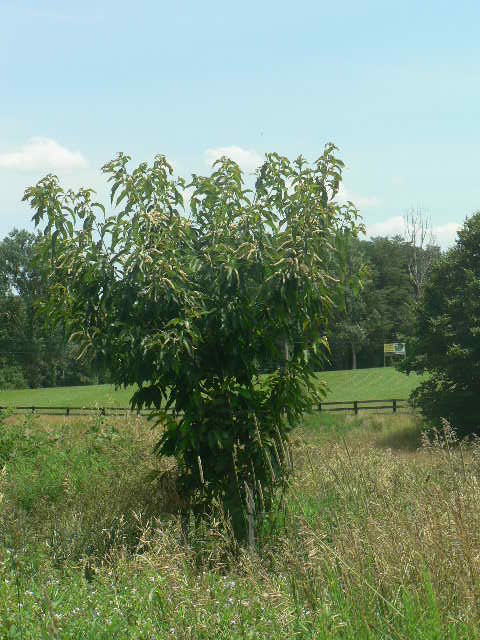
what happened? same tree a few years apart — a TACF hybrid chestnut
Part of the discussion on forest research explores the proper role of biotechnology in tree species’ restoration. Purdue University hosted a related workshop in April 2021, in which I took part. (“Society and Policy Influences on Biotechnology Risk Assessment for Restoration of Threatened Forest Tree Species”). I hope participants will soon publish a paper based on our discussions.
Meanwhile, Revive & Restore, a wildlife conservation organization promoting the incorporation of biotechnologies into standard conservation practice, sponsored a workshop in June 2020. The 57 conservationists, wildlife biologists, restoration specialists, conservation geneticists, ethicists, and social scientists who participated agreed on an appropriate structure for using biotechnology. These included:
- A broader definition of risk and application of new risk assessment tools;
- Consideration of the risks of not taking action, as well as going ahead with a proposal;
- Transparency about social and cultural values and engaging stakeholders
- Monitoring results to ensure actions have been successful, manage uncertainty, and codify lessons learned.
In the literature I read, the workshops I participate in (e.g., National Academy of Sciences 2019; Purdue’s), biotechnology is seen as a potentially helpful set of tools that must be integrated into broader programs, all having research, tree improvement, restoration, and reforestation components. Such programs must have sustained management and resources stemming from public support. (For more complete descriptions of components of a resistance breeding program, see Sniezko and Koch 2017 (full reference below); or Chapter 6 of FFIII). Activities that must be incorporated include:
- Germplasm collection and storage (applying the varied strategies that are appropriate);
- Research to detect and test potential resistance or tolerance;
- Research to identify techniques for producing propagules;
- Planting sites that will be secure for decades;
- Site preparation & planting;
- Post-planting maintenance; and
- Monitoring to determine success or problems
During the Purdue workshop, and in my writing, I have emphasized the principal hindrance to progress is the lack of resources being allocated to resistance breeding. USFS and academic scientists determined to pursue breeding approach must scrounge for funds. I describe some of their efforts below.
Collaborations on Breeding for Specific Species
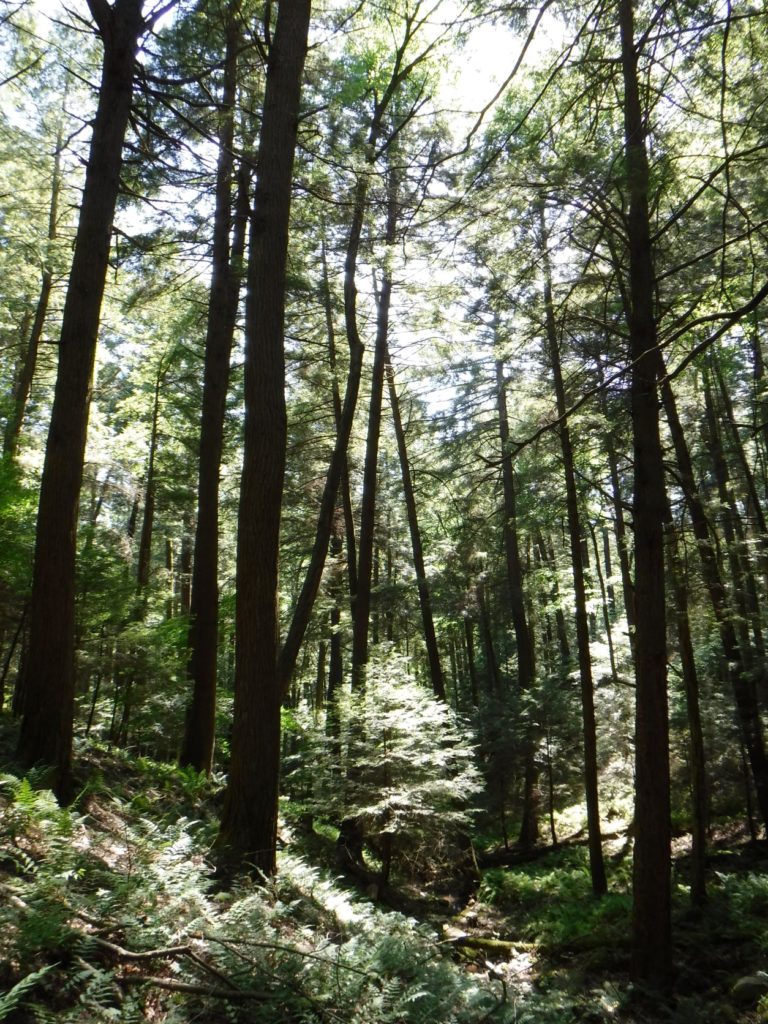
USFS Hemlock Woolly Adelgid (HWA) Initiative [apparently no website]
This initiative was developed under the leadership and direction of FHP staff. The list of cooperators includes dozens of state, federal, university and private organizations. The annual budget has averaged between $2.5 and $3.5 million. Most resources are apparently allocated to biocontrol, but some funding has been provided for breeding activities, including:
- Seed collection and storage for both Carolina and eastern hemlocks. Two seed orchards have been established in western North Carolina. I believe they are protected from the hemlock woolly adelgid (HWA) by application of pesticides.
- Research on these tree species’ silviculture and ecology, including manipulation of sunlight levels to protect seedlings from the adelgid and promote growth
The 2021-2025 Program – currently under review – foresees more integrated pest management applying biocontrol, chemical control, and silviculture. It aims to maintain the health of hemlocks being used in breeding programs and “explore” hemlock replacement options, such as hybrids or HWA-tolerant hemlocks (Mayfield et al. 2021). This effort is encouraging, but I have heard complaints from academics that they can’t get funding to pursue what they regard as promising breeding strategies.
Other small programs to breed resistant hemlocks are under way. The Forest Restoration Alliance (formerly the Alliance to Save Threatened Forests) asks citizens to identify surviving hemlocks and balsam firs. The Alliance has collected and propagated both cuttings and seeds and is testing their resistance.
Ash and Other Trees of the Upper Midwest
To date, few resources have been allocated to resistance breeding of ash. Between 2003 and 2017, only about 7% of research funds allocated to ash and emerald ash borer DMF have been devoted to host resistance. Of the host resistance research, 61% applied to identifying mechanisms, 14% to use of transgenics to develop resistance, only 7% (0.5% of the total research) has supported actual breeding for resistance (Sniezko and Koch 2017).
In May 2021 the USFS announced it was seeking funds from the water-focused Great Lakes Restoration Initiative. The USFS expects to receive up to $5.4 million for reforestation, ecosystem restoration. and forest health improvements on non-federal lands in the Great Lakes basin. (This includes parts of the states of Illinois, Indiana, Michigan, Minnesota, New York, Ohio, Pennsylvania and Wisconsin). The announcement doesn’t mention resistance breeding for ash, beech, hemlock, or other trees in the region. I hope some of the new funds will be allocated to this strategy.
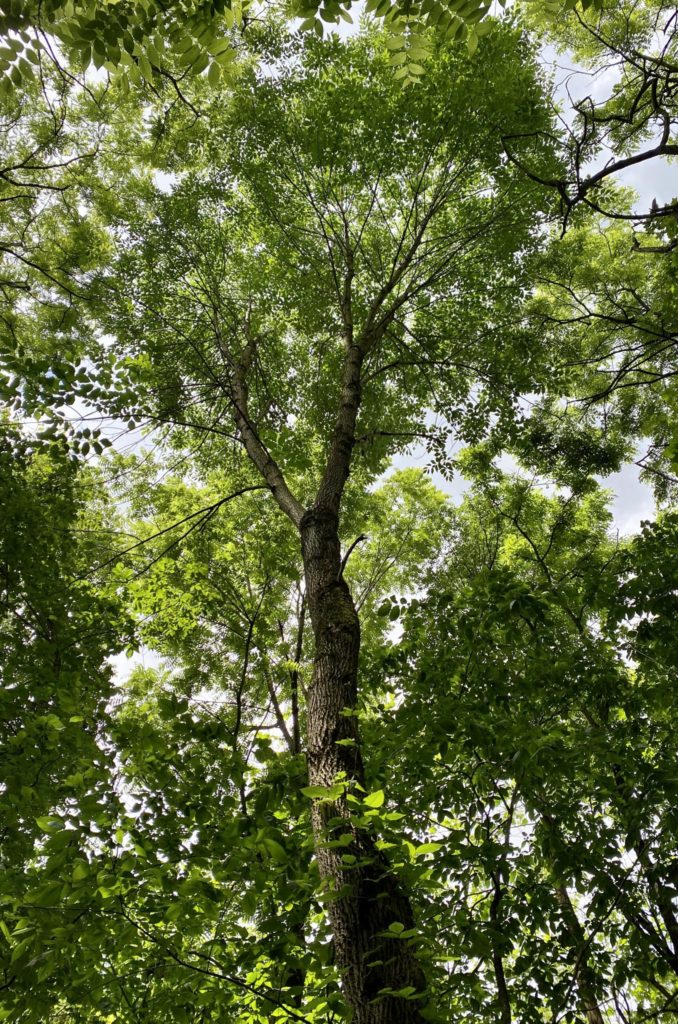
In an encouraging show of entrepreneurship, USFS scientists and others have formed the Great Lakes Basin Forest Health Collaborative – a partnership with Holden Forests and Gardens, American Forests, and USFS (Kappler et al. 2021). The purpose of the Collaborative is to advance resistance breeding for these important tree species. The initial focus is on the five ash species in the region, especially black ash (Fraxinus nigra) link to blog The Collaborative is recruiting a network of partners, and will provide training and technology transfer. The partners will provide volunteers and other resources. Partners do not have to be within the region if their work helps the Great Lakes Basin, but plantings have to be there.
Partners will help identify survivor trees with potential resistance (e.g., “lingering” ash); establish clone banks and/or seed orchards; and manage seed collections. Each partner will operate independently, but in collaboration with the others. The initial focus is on obtaining representative seed collections of ash and hemlock. Then cloning, testing resistance, and crosses can begin. Eventually select lines will be chosen for bulking up and reintroduction.
In future the Collaboration hopes to engage in breeding hemlocks and identifying beech trees that remain healthy in areas heavily impacted by beech leaf disease (BLD).
Other efforts under way include the Monitoring and Managing Ash (MaMA) Program, based in the Ecological Research Institute in New York State.
Beech trees with resistance to beech bark disease (BBD) were identified as early as the 1980s, but a breeding program was begun only in 2002. A collaborative, multi-agency effort has resulted in the establishment of five regional American beech seed orchards with four others in progress as of 2017. Partners provide a cost-effective process for identifying resistant parent trees. State and National Forest personnel surveyed natural forests for candidate trees and then tested each tree and identified markers associated with resistance (Sniezko and Koch 2017).
Challenges Beyond Breeding
Large-scale restoration of tree species across much of their ranges will require significant inputs of funds, over long time periods, as well as resolving daunting logistical issues.
Some think the most likely scenario will be to plant focal areas, or islands, that can aid future natural regeneration (Sniezko and Koch 2017). The American Chestnut Foundation (TACF) anticipates it will take 1,000 years to re-establish American chestnut DMF across its range through a process of three phases: long-term research and demonstration plantings; a relatively small-scale public horticultural program using trees and/or pollen made available by TACF; and a larger-scale public restoration program using progeny from years of outcrossing and production. (This assumes APHIS approves release of the transgenic “Darling 58” tree, plus – I believe – progress in developing resistance to root disease caused by Phytophthora cinnamomi). Already good progress using focal areas has started with several white pine species, and a national plan is in the works for whitebark pine.
Such efforts will require access to land that can be protected from other uses, e.g., development for decades or centuries. Also it will require management of sites to protect propagules from browsing wildlife (deer, rabbits!), provide adequate water and light, and probably give plantings a competitive advantage in relation to other plants growing there …
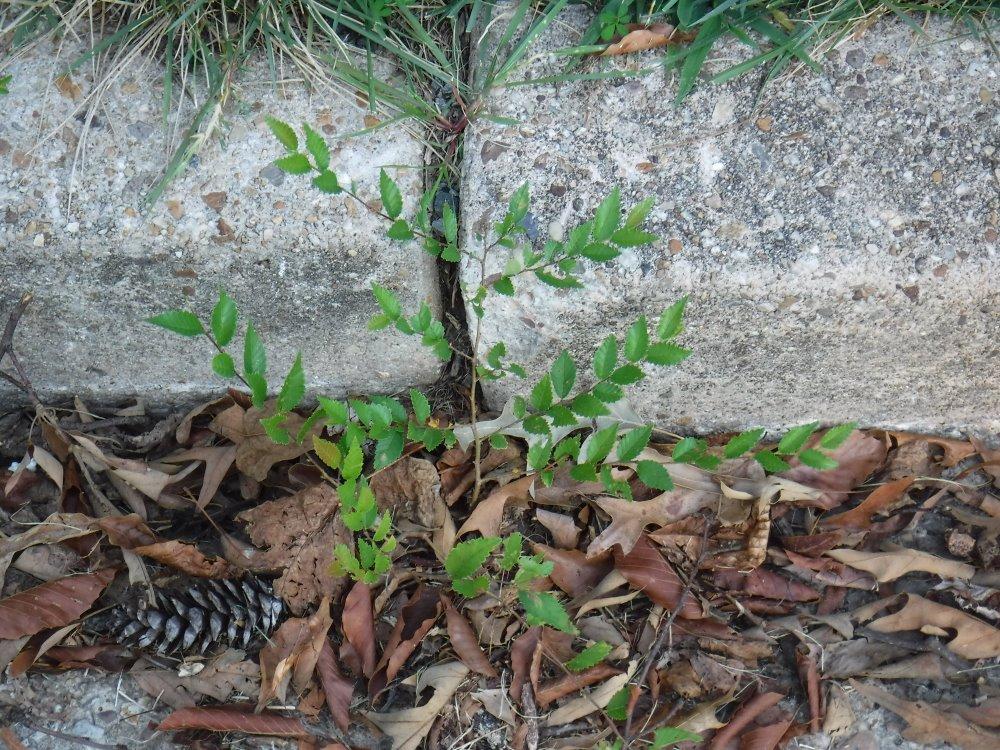
And there is the issue of how a relatively small number of resistant propagules will succeed in spreading their improved genetics in areas where non-improved elm, ash, beech and hemlock are reproducing naturally. Is reproduction of unimproved trees likely to continue in the face of new and old pests’ spread? If biocontrol agents succeed in reducing a pest’s impact on a host tree species, will that enhance the competitive ability of unimproved trees to the disadvantage of genetically improved conspecifics? What are realistic expectation for programs, and for their success?
Criteria for Success
Woodcock, Marzano, and Quine (2019) analyzed five breeding programs to identify aspects that contribute to success. Four of the programs were in North America; they targetted chestnut, western white pines, and Sitka spruce & white pine weevil. They concluded that
- Success is influenced by the level of resistance present in individual trees, the frequency of resistance in the population, and the heritability of resistance.
- It is important to consider current and potential future risks to the species in addition to the target pest or pathogen— the benefits of trees resistant to a specific threat are negated if it is susceptible to other threats.
- Demand [for a resistant tree to plant] should be evaluated, and the priorities of potential supporters and end users should inform the methods used to produce resistant trees.
- Operational deployment should balance the urgency of the threat with the consequences if resistant material does not perform as hoped. Urgency might differ for an emerging pest or pathogen.
- Deployment strategies should be informed by the risks of imposing a strong selection pressure on the pest or pathogen to evolve to overcome host resistance, and by potential impacts on partially resistant trees.
- Continued monitoring of field performance is important for evaluation, and can help to identify and mitigate emerging threats (e.g. new pathogen strains).
SOURCES
Bonello, P., F.T. Campbell, D. Cipollini, A.O. Conrad, C. Farinas, K.J.K. Gandhi, F.P. Hain, D. Parry, D.N. Showalter, C. Villari, and K.F. Wallin. 2020. Invasive tree pests devastate ecosystems – A proposed new response framework. Frontiers in Forests and Global Change. January 2020. Volume 3, Article 2
Buggs, R.J.A. 2020 Changing perceptions of tree resistance research. Plants, People, Planet. 2020; 2: 2– 4. https://doi.org/10.1002/ppp3.10089
Dudley, N.; Jones, T.; Gerber, K.; Ross-Davis, A.L.; Sniezko, R.A.; Cannon, P.; Dobbs, J. 2020. Establishment of a Genetically Diverse, Disease-Resistant Acacia koa A. Gray Seed Orchard in Kokee, Kauai: Early Growth, Form, and Survival. Forests 2020, 11, 1276
Federman, S. and P. Zankowski. 2019. Strategic science planning for responsible stewardship and plant protection at the U.S. Department of Agriculture. Plants, People, Planet © New Phytologist Trust 2019;00:1–4. https://doi.org/10.1002/ ppp3.10075
Kappler, R., C. Blashka, D. burke, E. Hall, C. Pike, J. Koch. 2021. Great Lakes Basin Forest Health Collaborative: What it’s all about. North American Forest Insect Work Conference 28 May 2021
Mayfield, A.E. III, Salom, S., Jetton, R., Havill, N., Rhea, R., and Mausel, D. 2021. North American Forest Insect Work Conference 28 May 2021. Spread, impact and management of HWA in eastern North America
National Academies of Sciences, Engineering, and Medicine. 2019. Forest Health and Biotechnology: Possibilities and Considerations. Washington, DC: The National Academies Press. https://doi.org/10.17226/25221.
Poland, T.M., P. Patel-Weynand, D.M Finch, C.F. Miniat, D.C. Hayes, V.M Lopez, editors. 2021. Invasive Species in Forests and Rangelands of the United States. A Comprehensive Science Synthesis for the US Forest Sector. Springer
Sniezko, R.A. and J. Koch. 2017. Breeding trees resistant to insects & diseases: putting theory into application. Biol Invasions. 2017. 19:3377-3400. DOI 10.1007/s10530-017-1482-5
Wheeler, N.C., K.C. Steiner, S.E. Schlarbaum, D.B. Neale. 2015. The Evolution of Forest Genetics and Tree Improvement Research in the United States, Journal of Forestry, Volume 113, Issue 5, September 2015, Pages 500–510, https://doi.org/10.5849/jof.14-120
Woodcock, P., M. Marzano, C.P. Quine. 2019. Key lessons from resistant tree breeding programmes in the Northern Hemisphere. Annals of Forest Science (2019)76:51 https://doi.org/10.1007/s13595-019-0826-y
Posted by Faith Campbell
We welcome comments that supplement or correct factual information, suggest new approaches, or promote thoughtful consideration. We post comments that disagree with us — but not those we judge to be not civil or inflammatory.
For a detailed discussion of the policies and practices that have allowed these pests to enter and spread – and that do not promote effective restoration strategies – review the Fading Forests report at http://treeimprovement.utk.edu/FadingForests.htm
